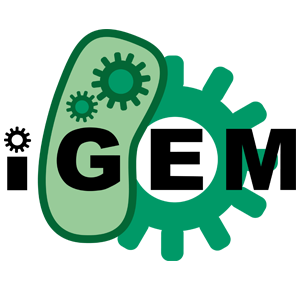Team:UiOslo Norway/HumanPractice/MediaplanAndTroubleshooting
From 2014.igem.org
Mediaplan and Troubleshooting
These are simple steps that may help you get media attention.
Identifying your goals
Identify what media you whish to be published in. When you have made a list, you should write what kind of audience they adress. Identify strategies to adress these media.
As an example one of our participants is from outside of Oslo. We contacted the district newspaper for publicity. Another example: We contacted The Norwegian Biotechnology Advisory Board. They were very positive and we wrote an article for them, directed towards their audience.
We sorted the media into different categories: TV, radio, newspapers and blogs (or social media).
These have different audiences and need to be approached in different ways. TV journalists are often interested in something visual to present. It should usually also be something with news value. For instance when we had the Ungforsk (look under Human practices) and had 300 pupils in secondary school visit us we called the district TV (Østlandssendingen). Typically the parents of these kids are interested in watching and they would regard this as relevant news. Unfortunately this was only put on the agenda and it turned out that other news were more important.
We identified two different radiostations that could be of interest. We adressed both of them, only one responded. They were very positive towards interviewing us, but for some reason other more pressing cases were priority.
For the newspapers it’s a very good idea to write down what you think would be an appropriate headline, and then write the some paragraphs about the project. When we contacted the media it was easier to get a positive response when we had something we could send them. When we were in touch with Teknisk Ukeblad this was very handy for the journalist (quite a few paragraphs in the article were pretty similart to what we had written).
For some newspapers, especially more specialized ones like Genialt (the news from the Norwegian Biotechnology Advisory Board), we called them and we were invited to write for them. This is very fortunate because we reach many relevant people and companies through this newspaper. This is the first year UiO has a team for the iGEM competition, and it’s therefore highly relevant that we "spread the news". For the next years team it will then be easier to get sponsors for instance.
Blogs and different kind of social media like facebook is more and more common, especially for students. This is why we adress this media. We wrote our own blog, but we have also written for other blogs, like the Masterblog. This is a blog for masterstudents from all disiplines. This blog is a nice way of spreading the idea about iGEM to people who are studying a vide variety of subjects.
Making a plan
When you have identified which media you want to adress and how or why, you should make a schedule. To get in touch with the right people is more timeconsuming than what it might seem. This should be done at the same time as you make a project schedule. The reason for this is that you might want to have several articles in the same magazine or newspaper. If you want to make a series with results and procedures this should be planned well. If you contact radio or TV-shows they also might want to follow the project for a while or visit several times. It is a good idea to know when you think you will be doing what so that you can make a good plan with the company.
The media plan doesn’t have to be very detailed, but it helps giving you an overview.
| Phase of the project | Media | Lab |
|---|---|---|
| Start phase |
|
Project planning |
| Lab work |
|
Lab work |
| End of lab work/results |
|
Results, testing, wiki-writing |
| Giant jamboree |
|
Preparation for the jamboree |
This schedule is a start. It should also contain dates for your project, and you might also add which media you call at what time. It is a good idea to elect one media-responsible, or a press contact.
Press releases
To write good write good press releases may take some time. You may write one very general press release to send to a great variety of media, or you can specialize them. The latter makes it easier to get through, especially if you have called them first.
The press release should start with a headline that catches the interest of the reader. If you do this, it’s easier to catch the interest of the journalist. The headline is followed by two to three sentences about your project. These sentences should be easy to read, and not contain to specific terminology.
Then you write two to three paragraphs about the project. It is usually a good idea to add a photo or two. The press release should generally be about one page, maximum two. At the bottom you should add contact information.
You can send the press release directly to the media you want to adress. If you have talked to a journalist and have their email you should send it to them. If you write a general press release it can be a good idea to send it to the communication responsible at your university. They usually know where to send the press release. In many countries there are information companies that distribute press releases. The university might know some of them.
Inviting others to blog
Sometimes contacting the media isn’t enough. Because of blogs and social media anyone is a potential journalist. Therefor it can be a good idea to invite others to blog about your project. We invited the head of the faculty, Morten Dæhlen, and the Headmaster, Ole Petter Ottesen, to write about the project, something they both did.
Follow up
When you’ve sent press releases and called the media you need to check what has been done. Very often the imidiate response seems positive. Eventually it turns out that other cases were more urgent. This is why a finnished article or a good press release will help you out because this makes the job easier for the journalist. In any case you should always follow up those you have called to get a final answer.
Different stories
Different newspapers and blogs usually want their own stories, meaning that you cant send the same article to two different places – unless they’ve agreed to that. This means that you have to write about the project in different ways, pointing out different aspects of your project. It may be hard to get ideas, but you can try some of the following. Write about the aspects of your project in relation to the track you’ve chosen. For instance we chose the track “new applications”, and we wrote about the general idea to Teknisk Ukeblad. If your project is about the environment you can write for environmental blogs and organisations. We wrote about iGEM as a subject for the masterblog and how it is to have a subject that is an international competition. It’s a good idea to have a meeting where everyone can come up with different ideas to articles and different points of view. Another way to do it is to see what’s on the news about biology and then write a comment about it. During the Norwegian Science Days we held a speech before a discussion about science communication. This was greatly due to our experiences this summer and because science communication has been a hot topic lately. Different people in the project also might view the project differently. Personal stories and experiences are usually a good way to share your project. Also talk to friends and family. I (Elina) wrote a story for the school newspaper of my cousin.
Prepare for an interview
It is a good idea to prepare for an interview. If you are going to be interviewed as a group it is a good idea to talk through the questions you anticipate. What are likely questions? How should they be answered? Always ask to check your quotes. This may vary from country to country, but generally you will have the right to see what you're quoted on.
If things get out of hand
Even if you do check your quotes, you can't control what context they're put in. However, you can always write a reply to try to correct this. Another strategy is to talk to another newspaper. In our case we have been in a process where we have written a reply to the newspaper and it was printed. We also filed a complaint to the Press Council.
Science communication in different forms
There are several ways to communicate science. It doesn’t have to be through the media or in a written form. We have held a lot of speeches and lectures as a way of communicating iGEM and synthetic biology. In order to get to hold speeches and lectures it can be a good idea to talt to the communication section at the faculty. Try to get an overview of different events where a speech can be held an address these.


 "
"

